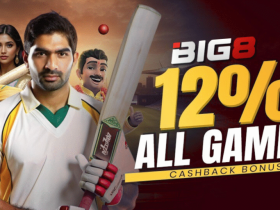When you’ve poured your heart and soul into writing a book, deciding how to price it can feel overwhelming. Pricing affects how readers perceive your work, how many copies you sell, and ultimately, how much income you earn. If you’re going the self-publishing route, it’s especially important to be strategic about how you set your price. Here’s everything you need to know to confidently price your self-published book and avoid common pitfalls along the way.
Understanding the Role of Perception in Pricing
The price of your book sends a message to your potential readers. If it’s too low, it may be perceived as lacking quality. If it’s too high, you may lose readers who aren’t willing to take a chance on an unknown author. Striking a balance is key. For fiction, most eBooks tend to sell well between $2.99 and $4.99. Non-fiction titles, especially those offering professional advice or valuable insights, can often command higher prices—sometimes up to $9.99 or more.
Print vs. Digital: Different Formats, Different Strategies
When pricing your self-published book, the format matters. eBooks have lower production costs and more flexibility in pricing. You can use temporary discounts or promotional pricing without losing money. Print books, on the other hand, involve tangible costs—printing, shipping, and distribution fees. A good rule of thumb for paperback pricing is to ensure you’re covering production costs while maintaining a reasonable profit margin, usually $2 to $5 per copy. Hardcover editions can fetch higher prices, but they also cost more to produce.
Consider the Market and Genre Norms
Do some comparative research within your genre. How are similar books priced? For example, a 200-page romance novel priced at $14.99 in paperback may struggle to compete if most others are listed at $9.99. On the flip side, a motivational or business book might justify a higher price due to perceived value. Keep in mind that pricing too far outside of the standard range can hurt visibility and sales, no matter how well-written your book is.
The Importance of Royalties and Distribution
The platform you choose for distribution—whether it’s Amazon KDP, IngramSpark, or a self-publishing service—will influence your royalties. Most platforms offer a 60% royalty on paperbacks minus printing costs, while eBook royalties can go up to 70% depending on the price and distribution choices. Keep in mind that selling through expanded distribution may decrease your profit per copy, so factor that into your pricing model.
Testing and Adjusting Over Time
One of the great advantages of self-publishing is the flexibility to change your pricing strategy over time. If sales are slow, you can test a lower price or try limited-time discounts. Launch promotions, bundling with other books, and seasonal sales can all help build momentum. Pricing isn’t a one-time decision—it’s a dynamic tool you can use to maximize both reach and revenue.
Working with Publishing Services: A Word on Mindstir Media
For authors considering a hybrid publishing model, companies like Mindstir Media provide services such as editing, design, marketing, and distribution assistance. Based on Mindstir Media review feedback from authors, it’s clear that working with a professional publishing service can influence your pricing strategy. Some authors report increased confidence in setting higher prices due to the quality of services received. However, it’s crucial to understand your contract details, especially around pricing flexibility and royalties, when working with any third-party service.
Final Thoughts: Know Your Worth, Know Your Audience
Ultimately, pricing your self-published book is both an art and a science. Understand your target audience, consider your goals—whether it’s reach, profit, or credibility—and stay adaptable. Whether you’re flying solo or partnering with a service like Mindstir Media, your pricing decision will have a long-term impact on your publishing success.















Leave a Reply